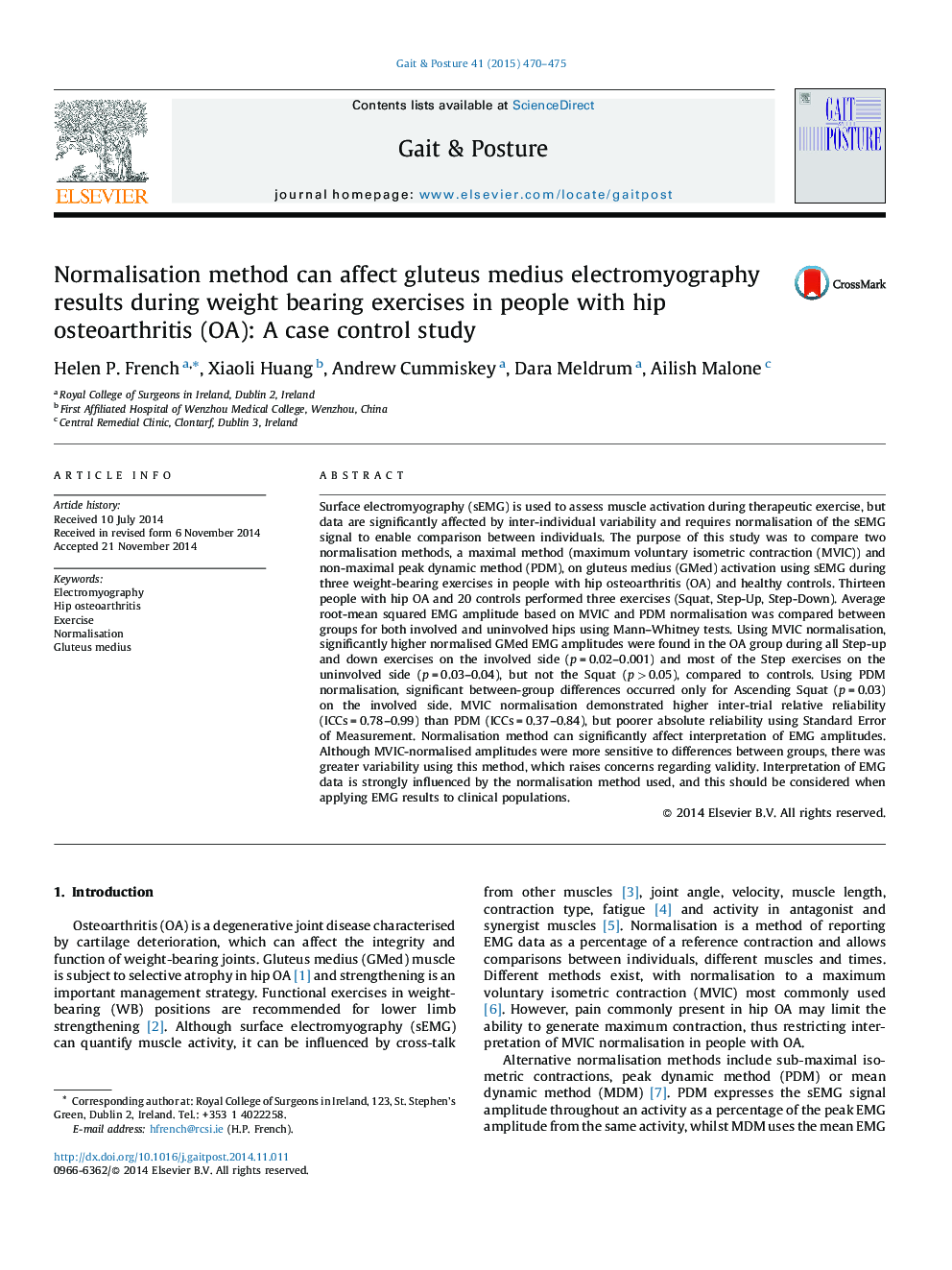| Article ID | Journal | Published Year | Pages | File Type |
|---|---|---|---|---|
| 6206109 | Gait & Posture | 2015 | 6 Pages |
â¢Dynamic and isometric EMG normalisation methods were compared.â¢Gluteus medius activation was measured during three weight bearing exercises.â¢People with hip OA were compared against symptom-free controls.â¢Dynamic normalisation resulted in fewer between-group differences than isometric normalisation.â¢Normalisation method could affect interpretation of EMG results.
Surface electromyography (sEMG) is used to assess muscle activation during therapeutic exercise, but data are significantly affected by inter-individual variability and requires normalisation of the sEMG signal to enable comparison between individuals. The purpose of this study was to compare two normalisation methods, a maximal method (maximum voluntary isometric contraction (MVIC)) and non-maximal peak dynamic method (PDM), on gluteus medius (GMed) activation using sEMG during three weight-bearing exercises in people with hip osteoarthritis (OA) and healthy controls. Thirteen people with hip OA and 20 controls performed three exercises (Squat, Step-Up, Step-Down). Average root-mean squared EMG amplitude based on MVIC and PDM normalisation was compared between groups for both involved and uninvolved hips using Mann-Whitney tests. Using MVIC normalisation, significantly higher normalised GMed EMG amplitudes were found in the OA group during all Step-up and down exercises on the involved side (p = 0.02-0.001) and most of the Step exercises on the uninvolved side (p = 0.03-0.04), but not the Squat (p > 0.05), compared to controls. Using PDM normalisation, significant between-group differences occurred only for Ascending Squat (p = 0.03) on the involved side. MVIC normalisation demonstrated higher inter-trial relative reliability (ICCs = 0.78-0.99) than PDM (ICCs = 0.37-0.84), but poorer absolute reliability using Standard Error of Measurement. Normalisation method can significantly affect interpretation of EMG amplitudes. Although MVIC-normalised amplitudes were more sensitive to differences between groups, there was greater variability using this method, which raises concerns regarding validity. Interpretation of EMG data is strongly influenced by the normalisation method used, and this should be considered when applying EMG results to clinical populations.
